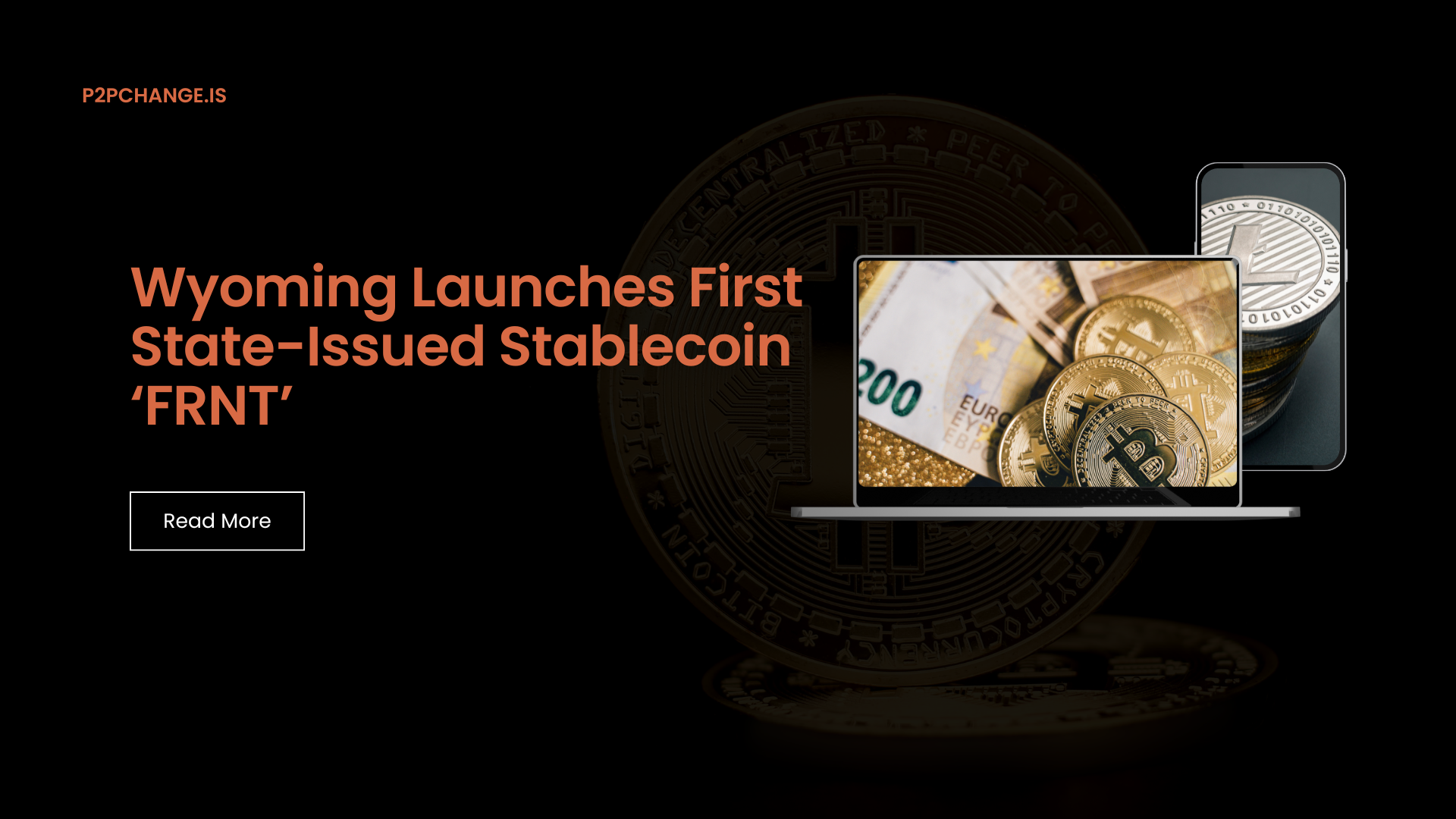
Wyoming just took a historic step in U.S. digital-asset policy: it launched the Frontier Stable Token (ticker: FRNT), becoming the first U.S. state to issue its own government-backed, fiat-pegged stablecoin. The program is overseen by the Wyoming Stable Token Commission and moves from years of legislative groundwork into live deployment.
What Wyoming actually launched
- Product: Frontier Stable Token (FRNT) — a dollar-pegged stablecoin issued by the State of Wyoming.
- Reserves & risk controls: Fully backed by U.S. dollars and short-duration Treasuries held in trust, with a statutorily targeted 102% (2% overcollateralization) buffer. Franklin Advisers manages the reserves; The Network Firm provides financial audits and monthly attestations.
- Chains at launch: Arbitrum, Avalanche, Base, Ethereum, Optimism, Polygon and Solana.
- Interoperability & issuance: Built with LayerZero to coordinate issuance across chains.
- Governance: Run by the Wyoming Stable Token Commission, created under the Wyoming Stable Token Act(2023) and updated in 2024.
In the state’s words, FRNT is meant to enable secure, transparent, and efficient digital transactions for consumers and businesses, with instant settlement and lower fees than legacy rails. Governor Mark Gordon, who chairs the Commission, framed the launch as the culmination of Wyoming’s multi-year push on blockchain legislation.
Availability and on-ramps
FRNT has been deployed on-chain and is rolling toward public access. Officials indicate the token will be available for purchase broadly in the coming days via select platforms, including Kraken (Solana) and the Rain crypto card platform (Avalanche). The Commission’s website also notes public purchase is anticipated in September 2025, reflecting a staged rollout.
Why this is a first
Plenty of private companies issue stablecoins; Wyoming is the first U.S. public entity to issue a fully reserved, dollar-pegged token at production scale. Bloomberg reports FRNT will be overcollateralized by 2%, with Franklin Advisors managing reserves and The Network Firm attesting, formalizing a conservative reserve model uncommon even among large private stablecoins.
The state is also targeting broad chain coverage on day one (seven networks), which is rare for government-led projects and could make FRNT easier to plug into wallets, merchant tools and DeFi infrastructure where permitted.
How FRNT fits into the legal and policy picture
FRNT rests on the Wyoming Stable Token Act and a dedicated Commission. The legislative framework—originating as SF0127 (2023) and refined in 2024—empowered the state to issue a fiat-backed, fully reserved stable token under formal oversight. That statutory base distinguishes FRNT from corporate products and sets clear duties for reserve management, reporting, and consumer protections.
StateScoop adds that Wyoming publicly positions FRNT as a government-backed alternative that can deliver “instant, low-cost digital payments that work 24/7 across borders,” while acknowledging that exact commercial use cases will develop over time.
What it could mean for payments and crypto adoption
- Government-grade assurances:
The reserve manager (Franklin Advisers), auditor (The Network Firm), and overcollateralization target may appeal to institutional treasurers and fintechs that prefer explicit public-sector oversight. That could make FRNT a bridge asset for compliant crypto payments in and out of Wyoming-aligned use cases. - Programmable settlement across ecosystems:
Issuing simultaneously on seven chains gives developers and PSPs a common state-issued unit of account they can send on Ethereum, Solana, Avalanche, Polygon, Base, Arbitrum, and Optimism, potentially reducing fragmented liquidity. - Template for other states (and cities):
If FRNT’s reserve model, reporting cadence, and fee economics succeed, other jurisdictions could copy the “public stable token” playbook—especially for cross-border commerce, vendor payments, and treasury modernization. StateScoop’s coverage suggests governors view such programs as tools to attract fintech investment and test faster settlement for industries like energy and data centers.
Skepticism and open questions
Not everyone is convinced a state stablecoin solves a mass-market problem. Critics interviewed by StateScoop questioned whether a government token materially improves on existing banking rails for everyday consumers, and what happens to the business case if yields on reserve assets decline over time. Those are fair questions for any stablecoin, public or private.
Timeline & access also remain in focus: the Commission’s site notes public purchase is anticipated in September 2025, even as exchanges and card platforms signal near-term onboarding. Users should watch official Commission channels for final token distribution details and verified partners.
Quick facts: FRNT at a glance
- Issuer: State of Wyoming (Wyoming Stable Token Commission)
- Peg & reserves: $1 peg; cash and short-term U.S. Treasuries; 2% overcollateralization target
- Audits/attestations: The Network Firm (monthly attestations)
- Reserve manager: Franklin Advisers
- Chains: ETH, SOL, AVAX, POL, BASE, ARB, OP
- Interoperability: Issuance coordinated via LayerZero
- Legal basis: Wyoming Stable Token Act (2023, updates in 2024)
- Public availability: Staged rollout; purchase anticipated September 2025 (watch official channels).